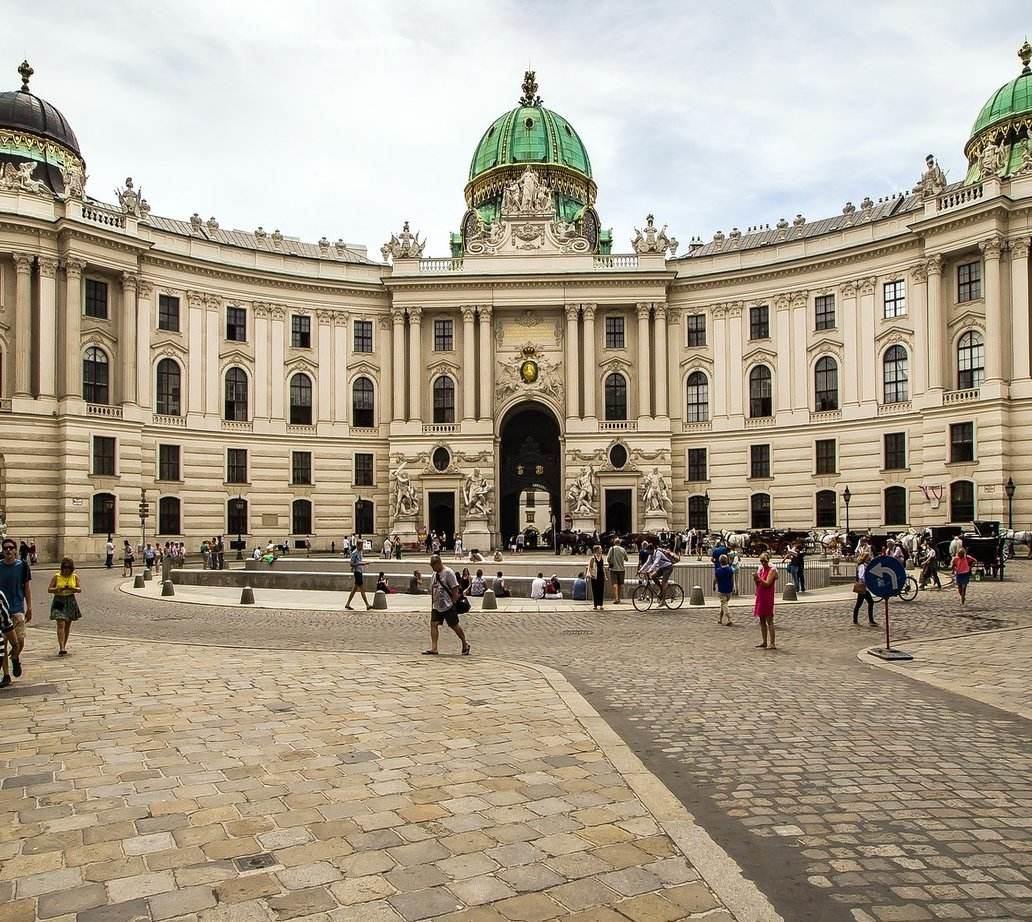Exploring the Magnificent Hofburg Palace in Vienna

Also known as the Imperial Palace, Hofburg Palace covers an astonishing 59 acres, making it one of the largest and most spectacular palace complexes in the world. Often considered to be a city within a city, the palace is made up of 18 collections of buildings, 19 courtyards and a staggering 2,600 rooms.
The palace was originally designed to be the residence and seat of Habsburg emperors, which it was up until 1918. And while it continues to be the seat of the Austrian Federal President today, the Hofburg Palace also acts as a tourist attraction, home to several art museums and the iconic Spanish Riding School. If you want to step back in time and meander through the same hallways and rooms that were once home to the Austrian aristocracy, a visit to the Hofburg Palace is an absolute must the next time you’re in Vienna.

History of Hofburg Palace
The palace’s name translates as “Castle of the Court”, denoting the intention for its primary use when it was constructed during the Middle Ages. It was originally planned to be the seat of the Dukes of Austria in the 13th century, but after initial construction it was continuously expanded over the centuries as the dukes became increasingly powerful. Between 1438 and 1583, and then again between 1612 and 1806, Hofburg Palace acted as a seat to the Habsburg emperors and kings of the Holy Roman Empire. Then between 1806 and 1918, it hosted the Emperors of Austria.
A considerable sum of European history was written within the palace walls, a great deal of it by Empress Maria Theresa. But she’s not the only famous icon from history who called the palace her home. Other notable residents include Empress Elisabeth (Sisi) and Emperor Franz Joseph who used the Hofburg Palace as a winter residence, while Schönbrunn Palace was their summer palace.

Hofburg Palace Architecture
The oldest parts of the colossal structure date all the way back to the 13th century, although ongoing construction continued up into the 20th century. Following its initial completion in 1275, almost every Austrian ruler demanded additions or alterations to the Hofburg Palace. This makes it a fascinating glimpse into the past as it literally reflects 700 years of architectural history. The palace as we know it today features an abundance of artistic styles, ranging from Baroque to Rococo, Gothic to Renaissance and elements of Classicism to boot.
What to do at the Hofburg Palace
For visitors, Hofburg Palace is divided into three main sections: the Imperial Apartments, the Sisi Museum and the Silver Collection. Each of these zones can be explored individually or you can combine all three into an extended visit. The area surrounding Hofburg and its outlying buildings also house several attractions worth visiting, including the Imperial Chapel, the Weltmuseum, the Austrian National Library and the Spanish Riding School.
Explore the Sisi Museum
Dedicated to Empress Elisabeth (also known as Sisi), the Sisi Museum provides visitors with a window into the lives of the 19th century aristocracy. The Hofburg Stephan Apartments showcase over 300 personal artefacts, including the empress’ beauty regime notes, christening robes and the death mask made after her assassination. You can explore the Sisi Museum as part of our Vienna city tour.

Visit the Spanish Riding School
A renowned institution and tradition which has been a major part of Vienna’s rich culture since 1565, the Spanish Riding School is a place where Lipizzan horses learn and flaunt their equestrian skills in front of awe-struck audiences. There are several different ways you can visit the Spanish Riding School. You can attend a morning exercise to see the stallions’ training routine live, you can go behind the scenes of Piber Stud and watch young foals play around with their mothers, or you can attend a full Spanish Riding School performance and witness the longest and most difficult Quadrille in the world.
Wander around the Imperial Apartments
There are many imperial apartments to explore, but some of the most interesting are undoubtedly the Franz Joseph Apartments, many of which have been unaltered since they were originally designed. Some of the highlights from this part of the palace include the dining room, with its flamboyant decor and inspiring Flemish artwork, along with the circle room which showcases intricate tapestries.
Other imperial apartments definitely worth visiting include Empress Elisabeth’s apartments to see her plush living room/bedroom highly regarded as the prettiest room in the palace, and the large salon, where you’ll discover a collection of Louis 14th furniture and a marble statue of Napoleon’s sister. You can explore the imperial apartments as part of this Vienna sightseeing package.
Watch the Vienna Boys’ Choir perform
The oldest part of Hofburg Palace is the Royal Chapel which dates back to the 13th century. This section is where the Vienna Boys’ Choir perform during mass services every Sunday — but that’s not the only place you can see them. For an extra special performance, book tickets to see the Vienna Boys’ Choir perform at the Spanish Riding School. This spectacular show combines two of the most iconic activities in Vienna and is guaranteed to be something you’ll never forget.
Discover the Silver Collection
The Silver collection is home to more than 7,000 spectacular treasures. From ceremonial tableware and 18th-century East Asian porcelain to a 10m-long Milanese centrepiece and a Ruby service that was used for grand occasions with up to 140 guests, the items on display within this museum are a must if you’re interested in the history of Vienna’s royalty. You can visit this part of the Hofburg Palace for free with a ViennaPass.







